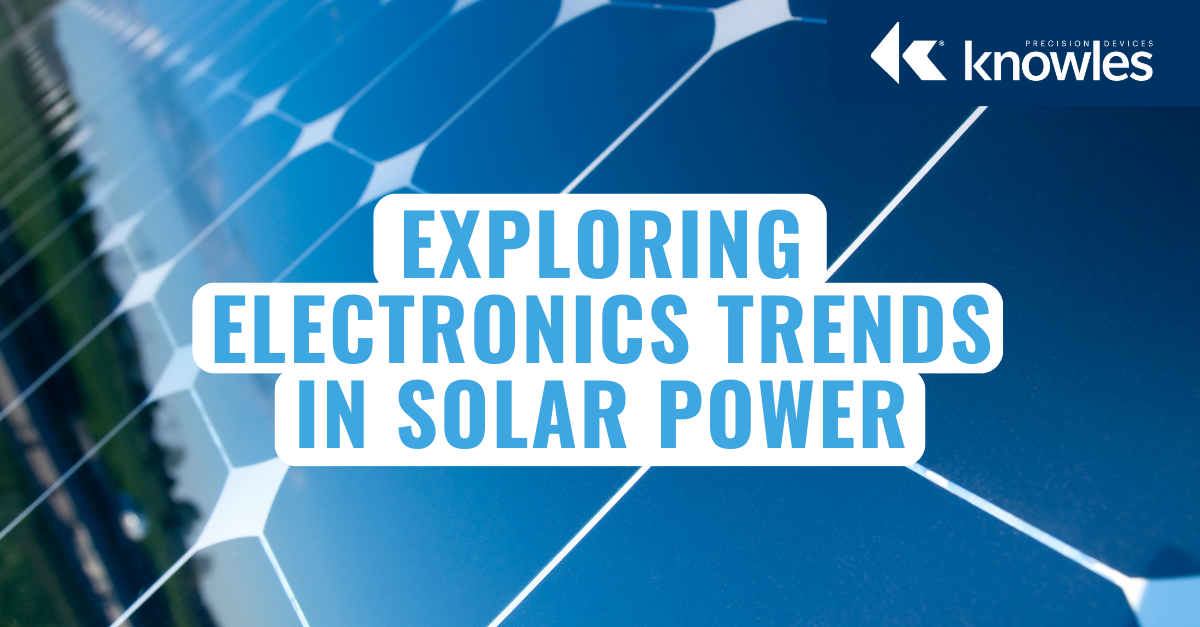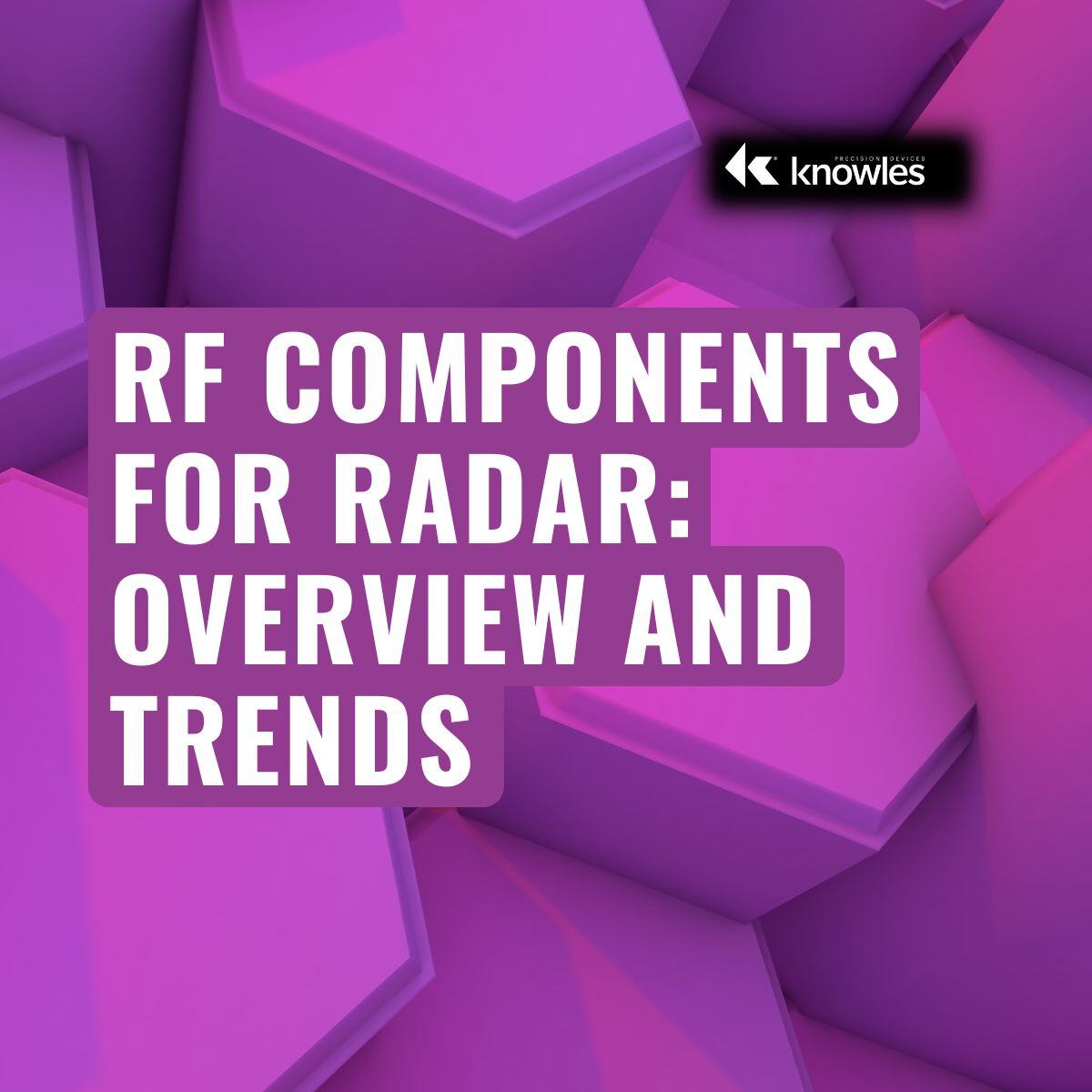Sensing technologies facilitate the gathering of detailed and accurate health data that are unique to each individual. The availability of real-time, precise data presents more opportunities for tailored approaches to treatment and care management, aligning medical interventions with specific patient needs. As sensing technologies advance, they enable a more nuanced understanding of individual health patterns, driving innovation in personalized care that aligns with the genetic, environmental, and lifestyle factors of each patient. Here are some key areas where sensing technologies are supporting individualized care.
Peter Matthews

Recent Posts
The Role of Sensing Technologies in Delivering Personalized Patient Care
This is the fifth installment in our RF Components for Radar series. In the first installment, we provided an overview of the key functional units in radar, including duplexing, filtering, power amplification, waveform generation, low-noise amplification (LNA), receiving and analog-to-digital conversion (ADC). Since then, we’ve covered duplexing, switch filter banks and filters in detail. In this post, we’ll discuss what phase can tell us about filter performance in radar applications.
Topics: RF and Microwave
Examining the Latest Electric Vehicle Technology Trends
The market demands and technology trends that impact all aspects of electric vehicle (EV) development are constantly evolving. As trends change, so do the requirements for EV power systems, which impacts the demands placed on the components we supply. Therefore, we feel it is our duty to stay on top of shifting EV trends and share what we are seeing with our customers. This blog looks at three key trends impacting EV development that we are currently monitoring around shifting semiconductor development, in-vehicle system integration as a way to control costs, and the evolution of the EV charging ecosystem.
Topics: Automotive, Electric Vehicles
The developmental trajectory of many modern power electronics systems is driven by evolving carbon dioxide (CO₂) regulations. By maintaining compliance, green energy production, like photovoltaics (PV) and wind, and high-efficiency distribution systems, like high-voltage direct current (HVDC) and battery energy storage systems (BESS), support our transition to a more sustainable future.
This is the fourth installment in our RF Components for Radar series. In the first installment, we provided an overview of the key functional units in radar, including duplexing, filtering, power amplification, waveform generation, low-noise amplification (LNA), receiving, and analog-to-digital conversion (ADC). While in the third installment we talked about filtering in terms of switch filter banks, in this post we will dive more into the jobs filters must perform in radar receivers.
Medical Imaging Trends We’re Keeping an Eye on at Knowles Precision Devices
In the first installment of our healthcare technology series, we discussed areas where health outcomes are improving as technology shifts closer to patients. Here, we’ll scratch the surface on three trends that are improving medical imaging technologies, and by extension, diagnostics, patient outcomes and access to care. We’ll usemagnetic resonance imaging (MRI), which leverages radio frequency (RF) signals, to contextualize these trends.
Topics: Medical
Switch Filter Banks for Agile RF Receiver Design in Radar
This is the third installment in our RF Components for Radar series. In the first installment, we provided an overview of the key functional units in radar, including duplexing, filtering, power amplification, waveform generation, low-noise amplification (LNA), receiving and analog-to-digital conversion (ADC). Here, we’ll focus on a particular form of filtering technology: switch filter banks.
Topics: RF and Microwave
At Knowles, it is our mission to provide specialty components that meet even the toughest performance and reliability requirements, especially for applications where failure is not an option. But, markets and requirements are constantly changing, which means we must closely monitor the trends impacting all the industries and applications where you might find our components. One area where we are seeing rapid innovation spanning the industries we serve is power electronics. At a high level, the trends driving power electronics innovation are largely centered around methods for providing more energy more efficiently while using smaller components. Below are four key power electronics trends we are currently monitoring and a how we can help you stay on top of each trend with your designs.
Topics: Automotive, Electric Vehicles, High Reliability
This is the second installment in our RF Components for Radar series. In the first installment, we provided an overview of the key functional units in radar, including duplexing, filtering, power amplification, waveform generation, low-noise amplification (LNA), receiving and analog-to-digital conversion (ADC). Here, we’ll focus on duplexing.
Topics: RF and Microwave, Military and Aerospace
Radar systems are designed to detect and identify an object’s location. They use short bursts of energy to transmit radio frequency (RF) and microwave signals and gather information from the echoed signal returned by the object.
Here, we’ll introduce radar, including its key functional units and technological evolution.
Topics: RF and Microwave










